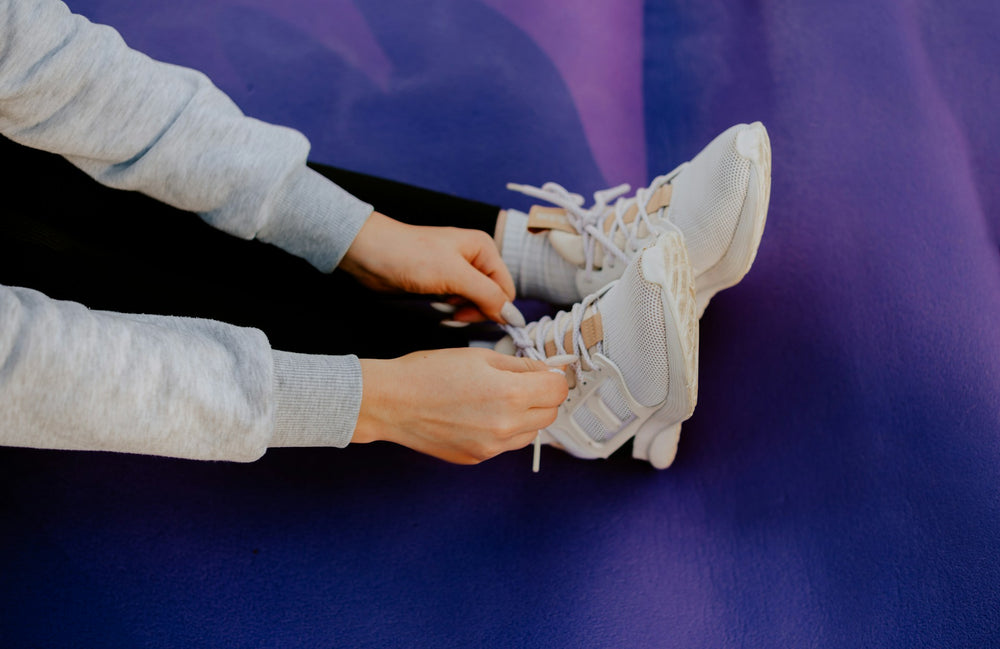Environmental Impact of Running Shoes: How to Choose Green

Running is a popular and healthy activity, but our shoes can immensely impact the environment. Many running shoes are made with materials and processes that harm the planet. Understanding this impact is the first step to making better choices. Choosing green running shoes can reduce your carbon footprint and help protect the Earth.
Looking for shoes from brands committed to sustainability can make a big difference. Making small changes in our buying habits can help save the environment, one step at a time.
Understanding the Environmental Impact of Running Shoes
Due to their materials and production processes, running shoes often have a significant environmental footprint. Most are made from synthetic rubber, plastic, and foam derived from fossil fuels, which take hundreds of years to decompose, contributing to landfill waste.
The production process also has an enormous environmental impact. It involves the use of energy, water, and chemicals. Factories often rely on non-renewable energy sources, which release carbon dioxide and other greenhouse gases into the atmosphere. The water used in production can also become contaminated with chemicals, leading to pollution in local water sources.
Transporting shoes from factories to stores adds to their carbon footprint as well. Shoes are often shipped over long distances, using fossil fuels that release greenhouse gases. Packaging materials like plastic and cardboard further contribute to waste. Understanding these impacts helps us make more eco-conscious choices.
Features of Eco-Friendly Running Shoes
Eco-friendly running shoes focus on reducing environmental impact through their materials and production processes. Here are some features to look for:
- Recycled Materials: Look for shoes made with recycled plastics, rubber, and foam. Using recycled materials helps reduce waste and the need for new raw materials.
- Natural Materials: Shoes made from natural rubber, organic cotton, or bamboo are better for the environment. These materials are renewable and biodegradable, reducing long-term waste.
- Sustainable Production: Brands that use renewable energy sources and water-efficient processes have a lower environmental footprint. Check for companies that are transparent about their manufacturing practices.
- Durability: Durable shoes last longer, reducing the frequency of replacements. This helps to minimise waste and the resources needed to produce new shoes.
How to Identify Green Running Shoe Brands
Finding green running shoe brands involves looking for companies that prioritise sustainability. Here are some key indicators to help you identify eco-friendly brands:
- Transparency: Eco-friendly brands often share detailed information about sustainability practices. Check their websites for information about their materials, production processes, and environmental goals.
- Certifications: Look for certifications such as Fair Trade, OEKO-TEX, or the Global Organic Textile Standard (GOTS). These certifications indicate that the brand meets specific environmental and ethical standards.
- Innovative Materials: Brands using innovative materials like recycled plastics, plant-based materials, and biodegradable components will likely focus on sustainability.
- Eco-Friendly Initiatives: Companies that engage in initiatives like reforestation, carbon offsetting, or donating a portion of their profits to environmental causes show a commitment to the planet.
- Positive Reviews: Customer reviews and expert opinions can also provide insights into a brand’s sustainability practices. Look for feedback from eco-conscious consumers and reviewers.
By focusing on these indicators, you can find brands that align with your eco-friendly values and make more sustainable choices.
Tips for Choosing Sustainable Running Shoes
Choosing sustainable running shoes involves considering several factors to ensure they are environmentally friendly. Here are some practical tips:
- Check the Materials: Look for shoes made from recycled or natural materials. Avoid shoes made from synthetic rubber and plastics that harm the environment.
- Assess Durability: Choose shoes that are built to last. Durable shoes reduce the need for frequent replacements, saving resources and reducing waste.
- Look for Recyclable Options: Some brands offer shoes that can be recycled at the end of their life. Check if the brand has a take-back or recycling programme in place.
- Support Ethical Brands: Choose from brands committed to fair labour practices and ethical production methods. This will promote better working conditions and reduce environmental harm.
- Consider Second-Hand: Buying second-hand running shoes can be eco-friendly. This reduces demand for new shoes and decreases waste.
By following these tips, you can make informed decisions that benefit your running performance and the environment.
Conclusion
Choosing sustainable running shoes is a meaningful way to lessen your environmental impact. With awareness, you can make choices that support eco-friendly practices. From understanding the ecological impact of traditional running shoes to recognising the features of eco-friendly options, every small step counts towards a greener future. Identifying green brands and knowing what to look for in sustainable shoes helps you make good decisions for yourself and the planet.
At Sole Mate in Merthyr Tydfil, South Wales, we are passionate about helping you find the right running shoes in the UK that are also kind to the environment. Visit us today to explore our selection of eco-friendly running shoes and make a positive impact with your purchase. Take a step towards sustainability with Sole Mate!
